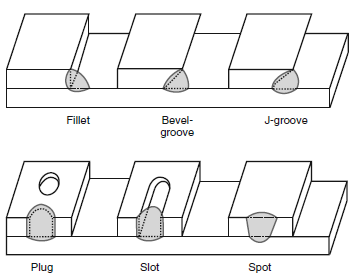Introduction: What Is Welding in Structural Steelwork?
Welding is a fundamental process in structural engineering, especially when it comes to steel structures. It involves joining steel components together by melting the metal at the joints and allowing it to cool and fuse. This process is essential for creating strong, durable connections between steel members in various structures like bridges, buildings, and industrial facilities. While it may seem straightforward, the analysis and design of welded steel members require careful consideration to ensure safety, strength, and long-term performance.
Types of Welds in Structural Steel Design
Before diving into the analysis, it’s important to understand the common types of welds used in structural steel design:

- Fillet Welds: These are triangular in cross-section and are used to join two surfaces at right angles to each other. They are commonly used in T-joints, lap joints, and corner joints.
- Groove Welds: Groove welds are used when two pieces of metal are joined along their edges. They can be of various shapes like square, V, U, or bevel, depending on the design requirements.
- Plug and Slot Welds: These are used to join overlapping plates, where a hole or slot is filled with weld metal.
- Spot Welds: More commonly used in thinner materials or sheet metal applications, spot welding involves joining metal by applying pressure and heat to a specific point.
Each type of weld has its unique applications and considerations in structural engineering, making it crucial to select the appropriate method based on the design needs.
Why Is Weld Analysis Necessary?
Weld analysis is a critical part of structural engineering design for several reasons:
- Ensuring Safety: Proper weld analysis ensures that the welded joints can carry the intended loads without failure, which is essential for the overall safety of the structure.
- Performance Under Load: Structural members often experience various forces such as tension, compression, shear, and bending. Weld analysis ensures that these forces are distributed correctly through the welded connections, maintaining structural integrity.
- Preventing Fatigue and Failure: In structures subjected to dynamic or cyclic loading (like bridges or high-rise buildings), welds can become a point of weakness if not analyzed and designed properly. Incorrect weld sizing or placement can lead to cracks, deformation, or even catastrophic failure over time.

What Happens If Weld Analysis Is Not Done Correctly?
Failure to conduct a thorough weld analysis can have serious consequences:
- Structural Failures: Welded joints that cannot withstand the applied loads may fail suddenly, leading to the collapse of parts of or the entire structure.
- Excessive Deformation: Inadequate welds may allow excessive deformation in the structure, compromising its serviceability and leading to costly repairs.
- Increased Maintenance Costs: Poorly designed welds may require frequent inspections and repairs, increasing maintenance costs and reducing the structure’s lifespan.
- Safety Hazards: In worst-case scenarios, improper weld design could result in dangerous conditions, posing risks to the lives of occupants or users of the structure.
Key Variables to Consider in Weld Analysis
Weld analysis involves a variety of factors that need to be considered to ensure the safety and performance of welded connections. Some of the key variables include:
- Effective Weld Area: The effective weld area is calculated based on the length and size of the weld, as well as the throat dimension (the minimum distance from the root to the face of the weld). This area determines the load-carrying capacity of the weld.
- Nominal Strength of Welded Joint: This refers to the capacity of the weld metal and is based on material properties and the type of weld used. The design must ensure that the strength of the weld is adequate to support the loads it will encounter.
- Load Types and Directions: Different loads, such as axial, shear, and bending, can act on a welded connection. It is crucial to analyze the behavior of the weld under each type of load and ensure that it can handle the combined effects of these forces.
- Weld Length and Size: Longer and larger welds can increase the strength of the joint, but they also increase the heat input, which can affect the metallurgical properties of the steel. Finding the right balance is important to avoid problems like distortion or residual stresses.
- Welding Process and Technique: The method used for welding (e.g., shielded metal arc welding (SMAW), gas metal arc welding (GMAW), or submerged arc welding (SAW)) affects the quality and characteristics of the weld. Different processes may produce different weld strengths, penetration depths, and heat-affected zones.
 ▲ Welding Design sample file
▲ Welding Design sample file
Conclusion: The Importance of Thorough Weld Analysis
Weld analysis is an essential aspect of structural engineering that ensures the safety, reliability, and durability of steel structures. By considering factors like effective weld area, load types, and the properties of the weld metal, engineers can design connections that withstand the demands placed on them. Proper analysis not only helps prevent failures and deformations but also contributes to the efficient use of materials and resources.
For engineers and designers, understanding the nuances of weld analysis is crucial to creating structures that are safe, cost-effective, and capable of performing as intended over their lifespan. So the next time you design a steel structure, remember that a small weld detail can make a big difference!








